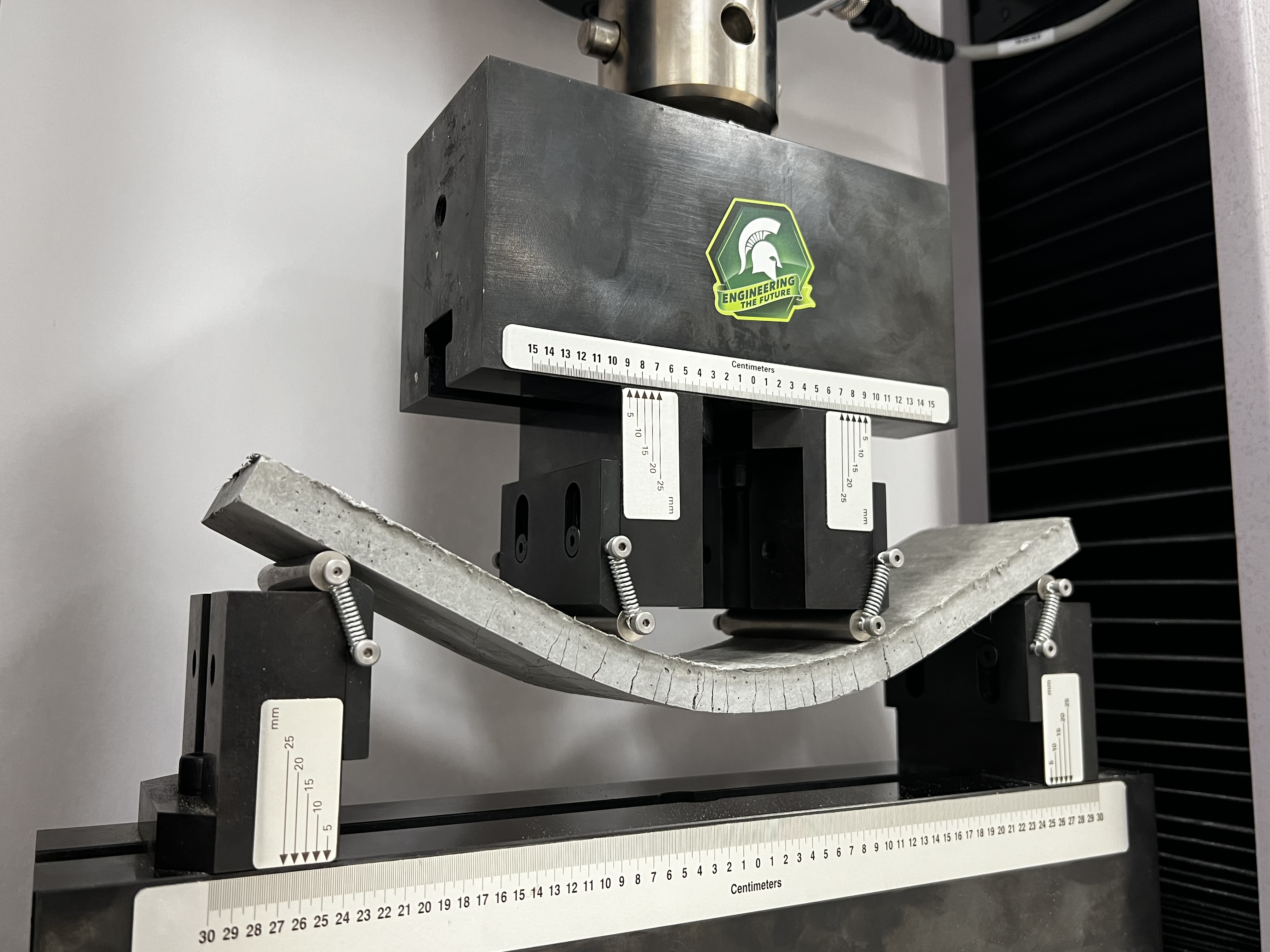“This could revolutionize the concrete industry and our infrastructure,” said Qingxu “Bill” Jin, an assistant professor in the College of Engineering. “This technology could also be a solution for underserved or rural communities with limited access to snow and ice removal options, providing a safer and more sustainable solution during winter months.”
Concrete is commonly used for roads and sidewalks because of its strength and durability. But the frequent freezing and thawing of water can create cracks, and snowplows cause surface damage resulting in costly road repairs and closures. During the winter, road and deicing salt is often used to melt the ice on roads and sidewalks, but the chloride in the salt is corrosive and damages the concrete. Also, any salt left over eventually ends up in the groundwater, causing environmental concerns.
“This concrete product can potentially be used as a protective layer over the pavement, which can reduce or even eliminate the need for deicing salt usage,” said Jin. “Due to recent changes in the climate causing more extreme weather conditions, we needed to come up with innovative ways to remove ice from roadways.”
Jin and current graduate student Xiaoqiang “Antonio” Ni developed the proprietary formula and tested the limits of the technology for real-world applications.
This self-heating concrete material stores more energy than conventional materials. When the air temperature drops to near freezing temperatures, the material releases that stored energy as heat, making it ideal for clearing ice and removing snow off roads and sidewalks.
Ni’s testing of the flexibility of the concrete was essential to determining if the material could withstand the weight and stress of heavy automotive traffic.
“Through our testing, we found that a layer of this concrete a couple of inches thick would be enough to protect the concrete underneath and still maintain its heating and self-healing properties,” said Ni.
The team also carefully designed the concrete to effectively heal itself.
“Cracks as thin as a human hair can repair themselves,” said Jin. “It’s like when you have a paper cut on your finger.”
Brennan Sollenberger, a two-time MSU alum in civil engineering who worked in Jin’s lab, supported Ni by helping him prepare samples for testing.
“While working on this project, I was able to see firsthand the snow-melting capabilities of our self-heating concrete mixtures,” said Sollenberger. “We were also able to demonstrate bendability and self-healing capabilities.”
This concrete could be a solution that helps people and the environment.

